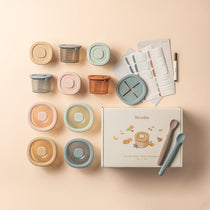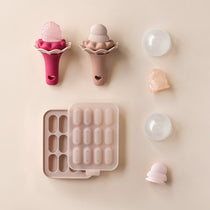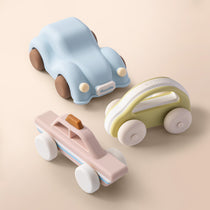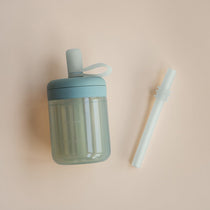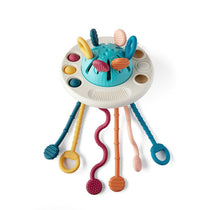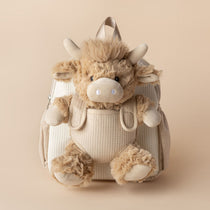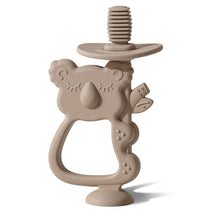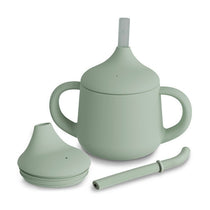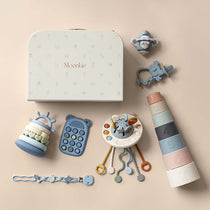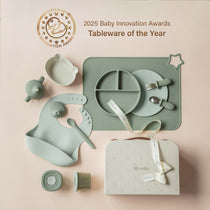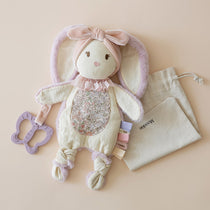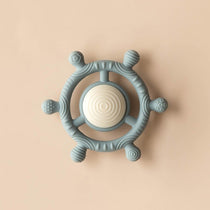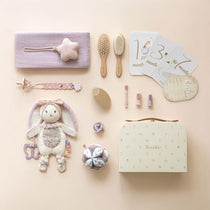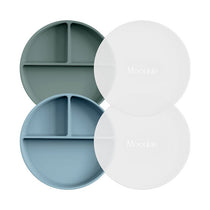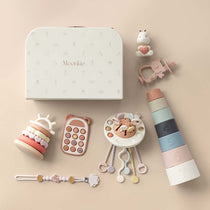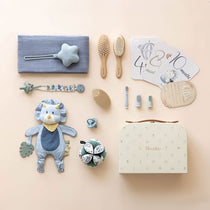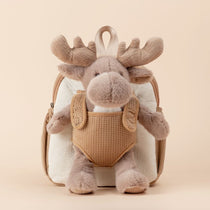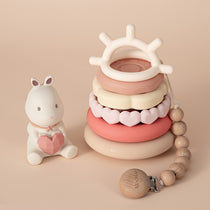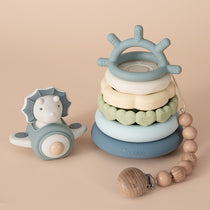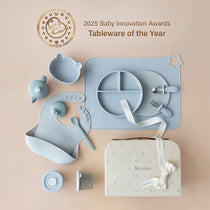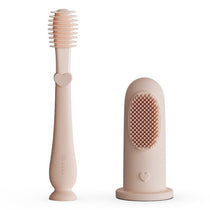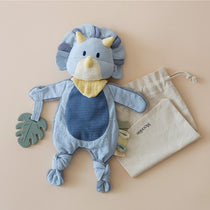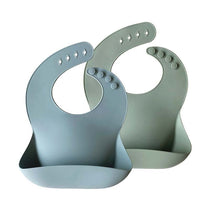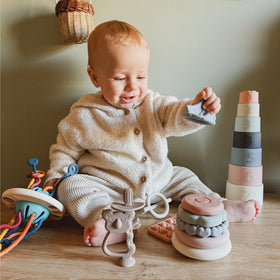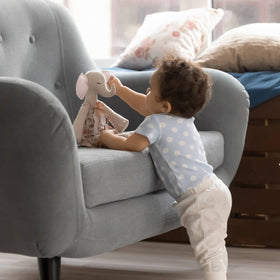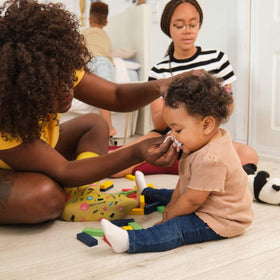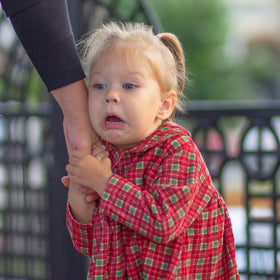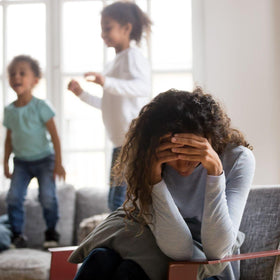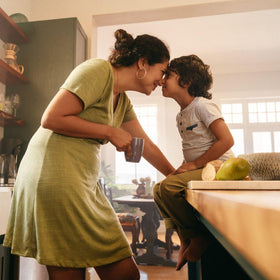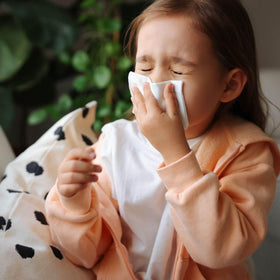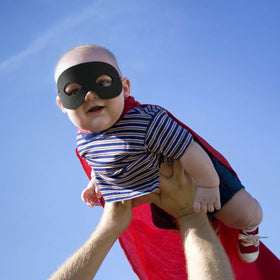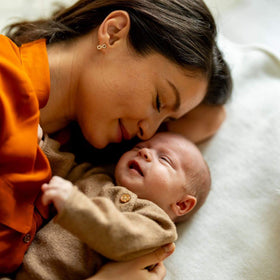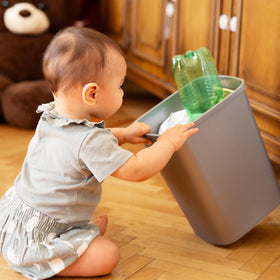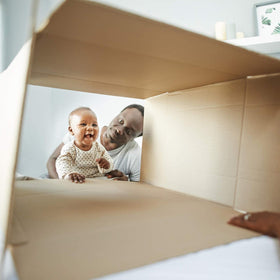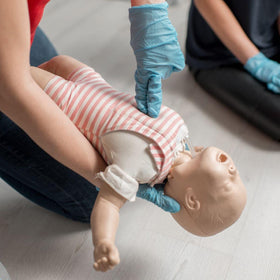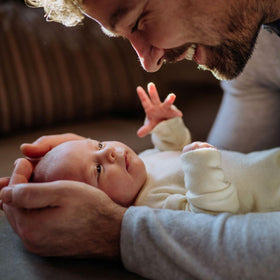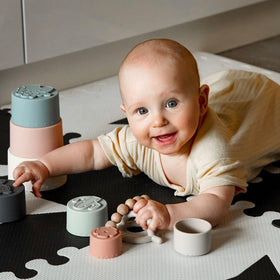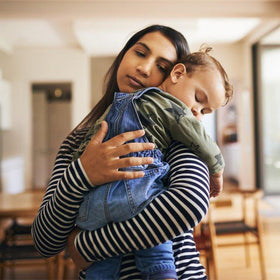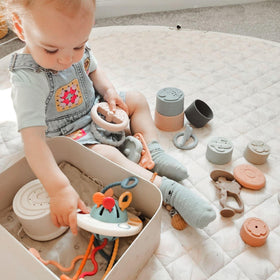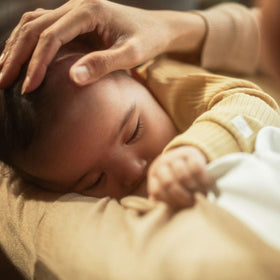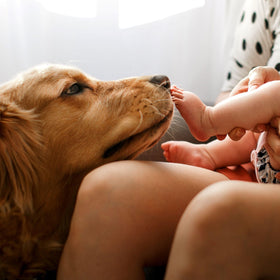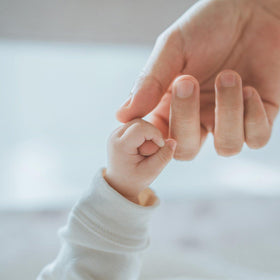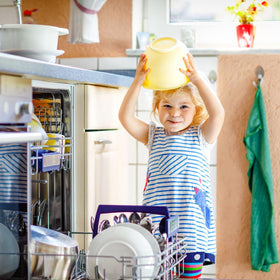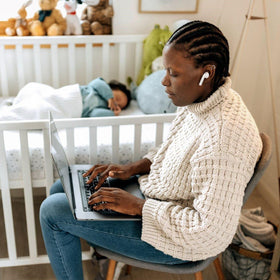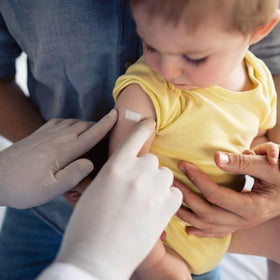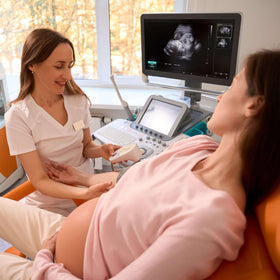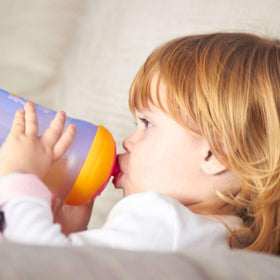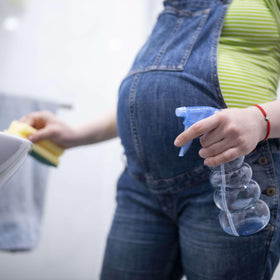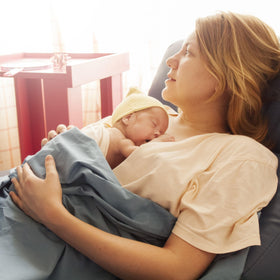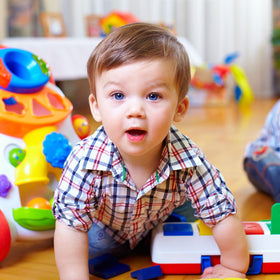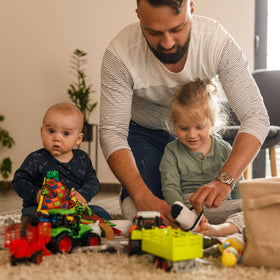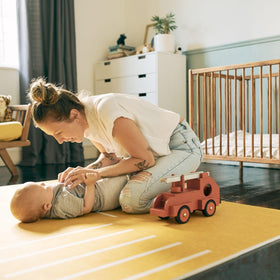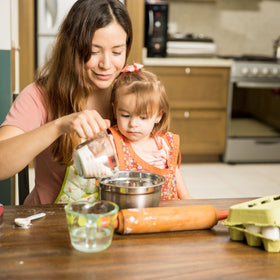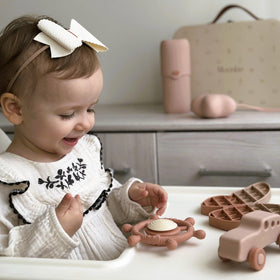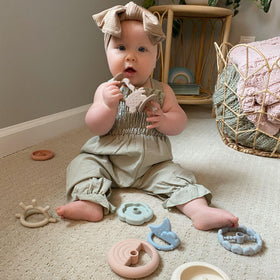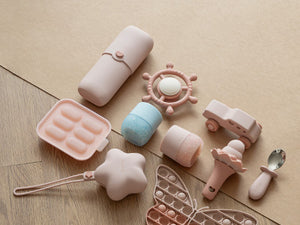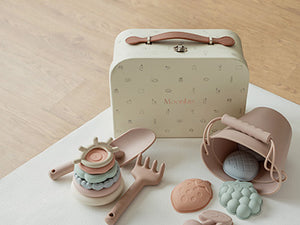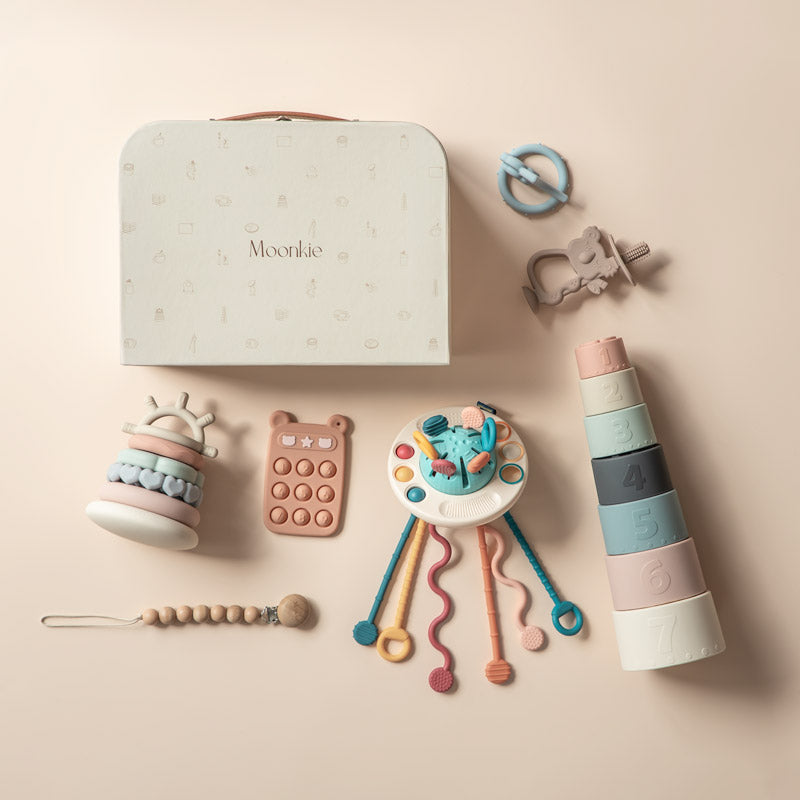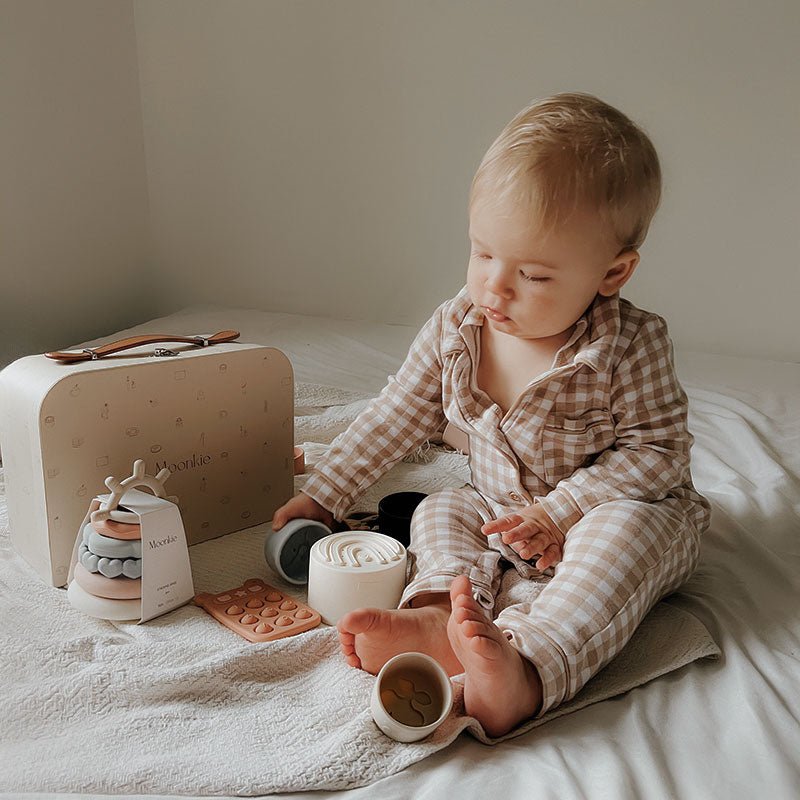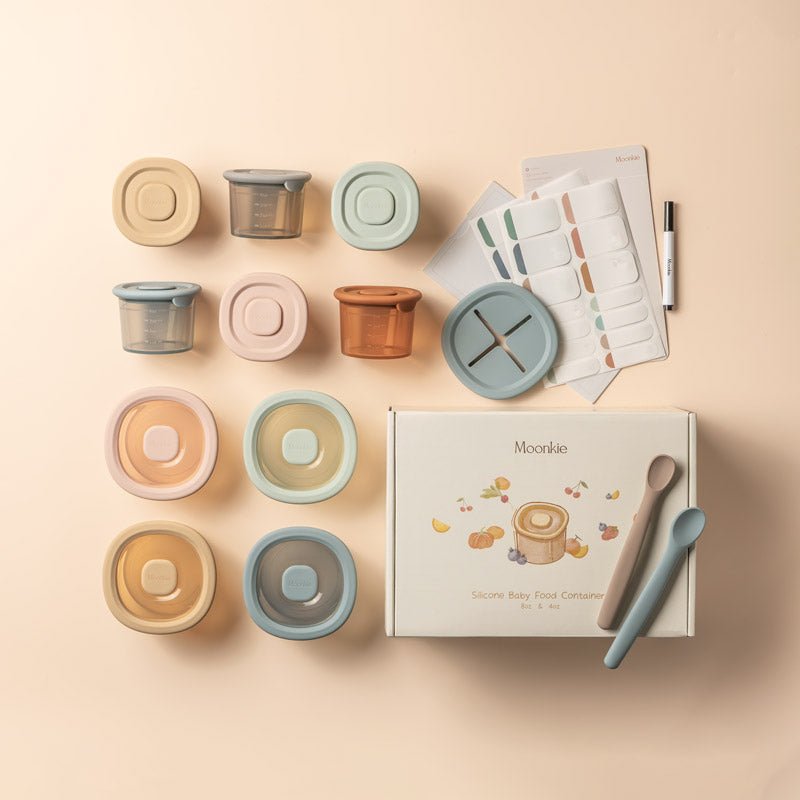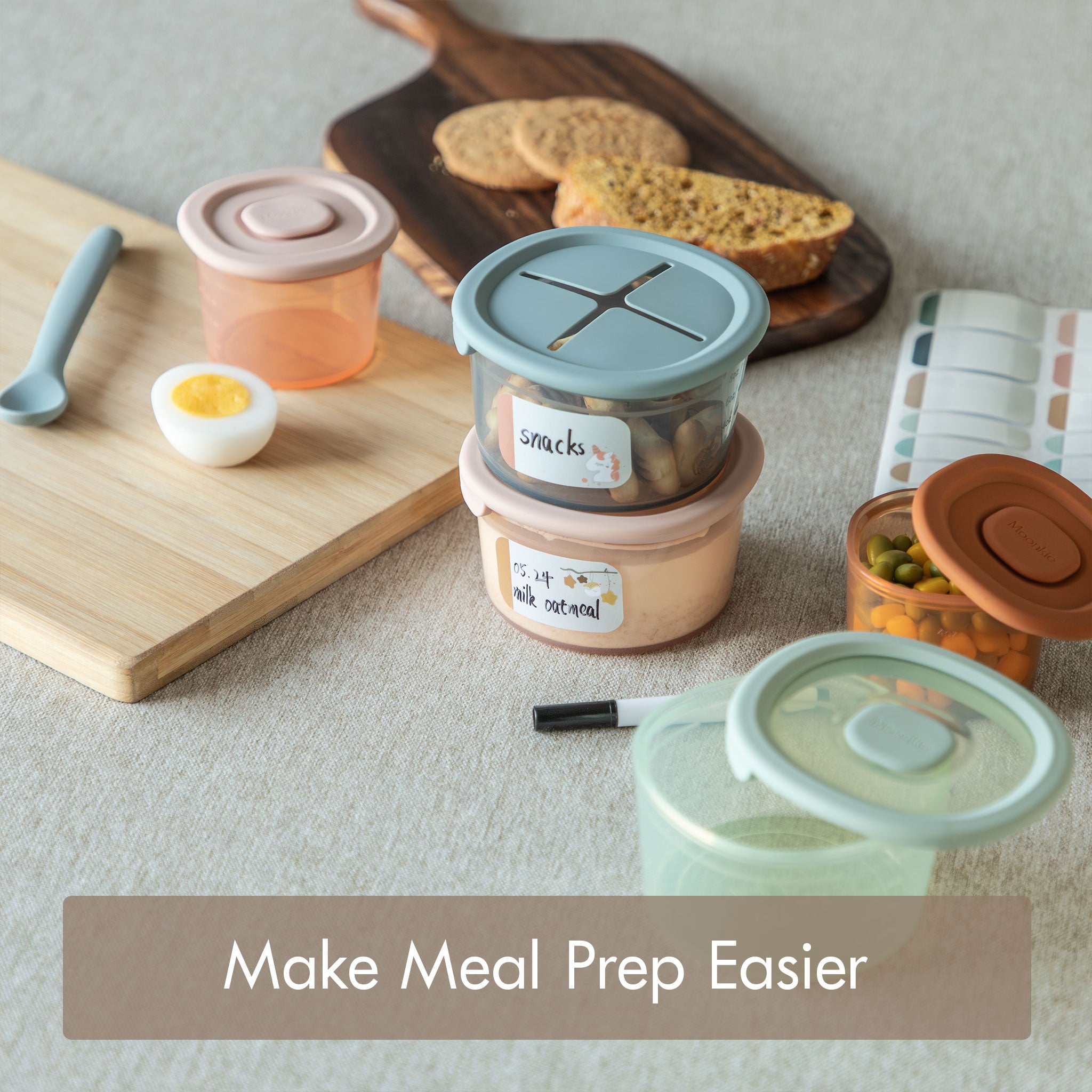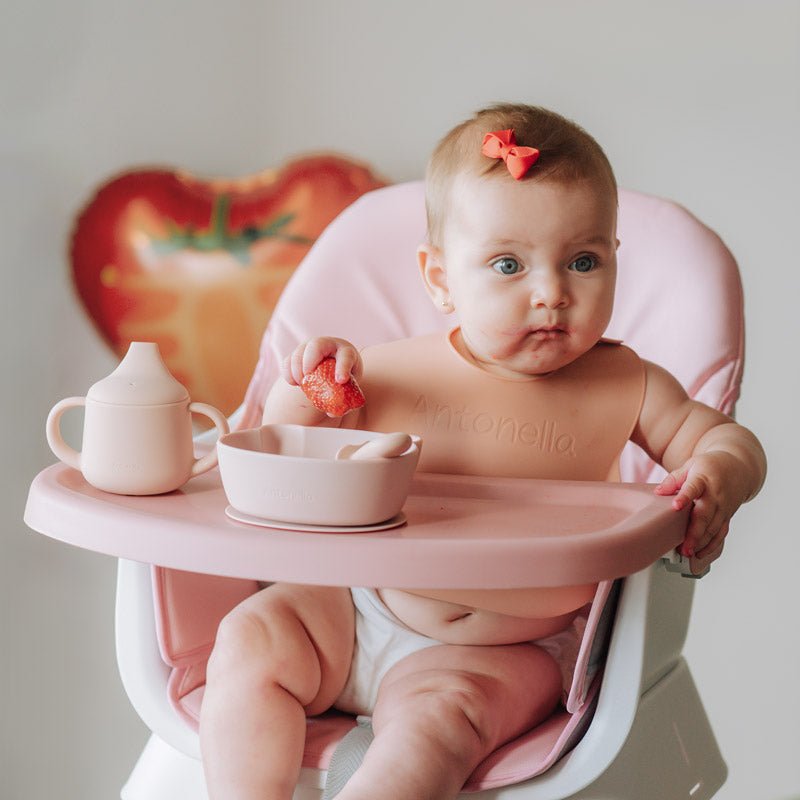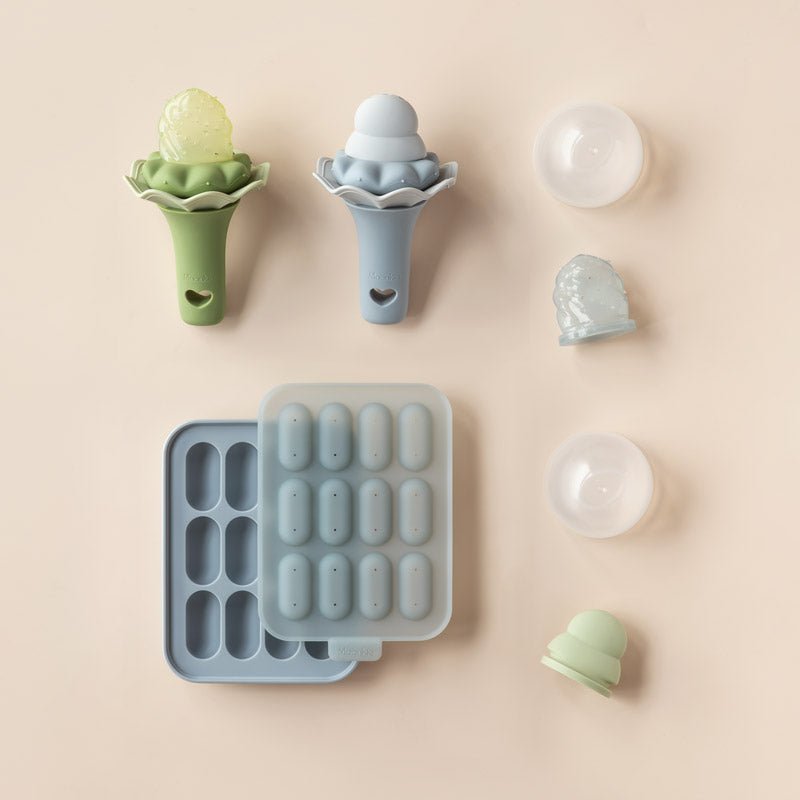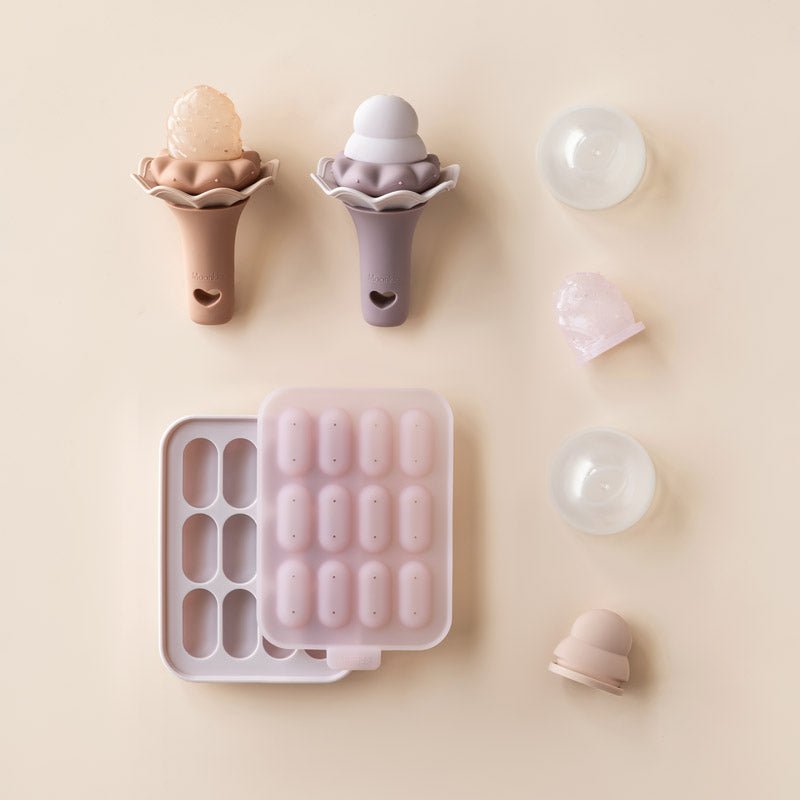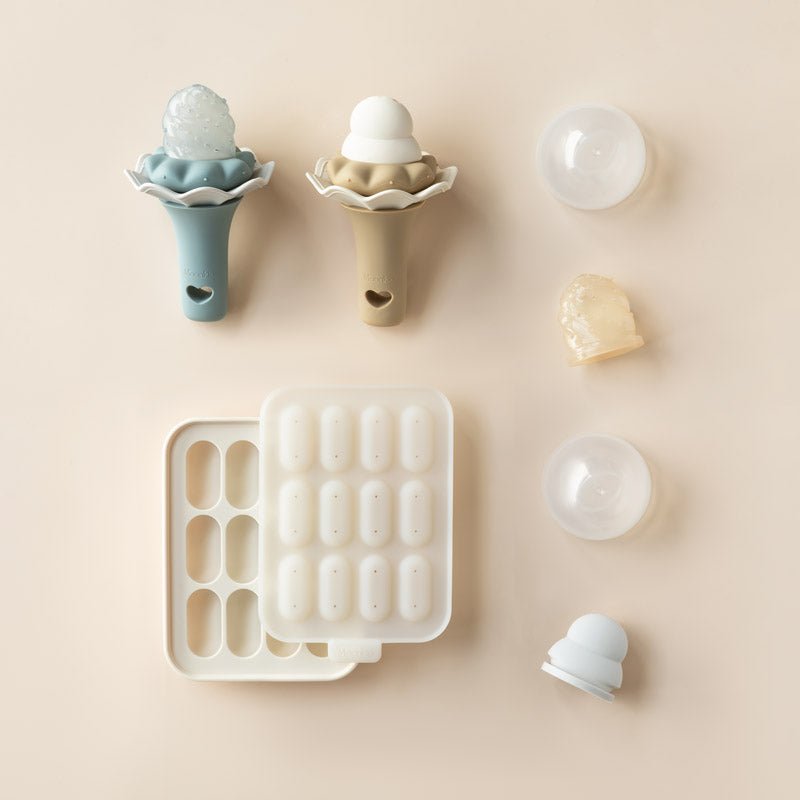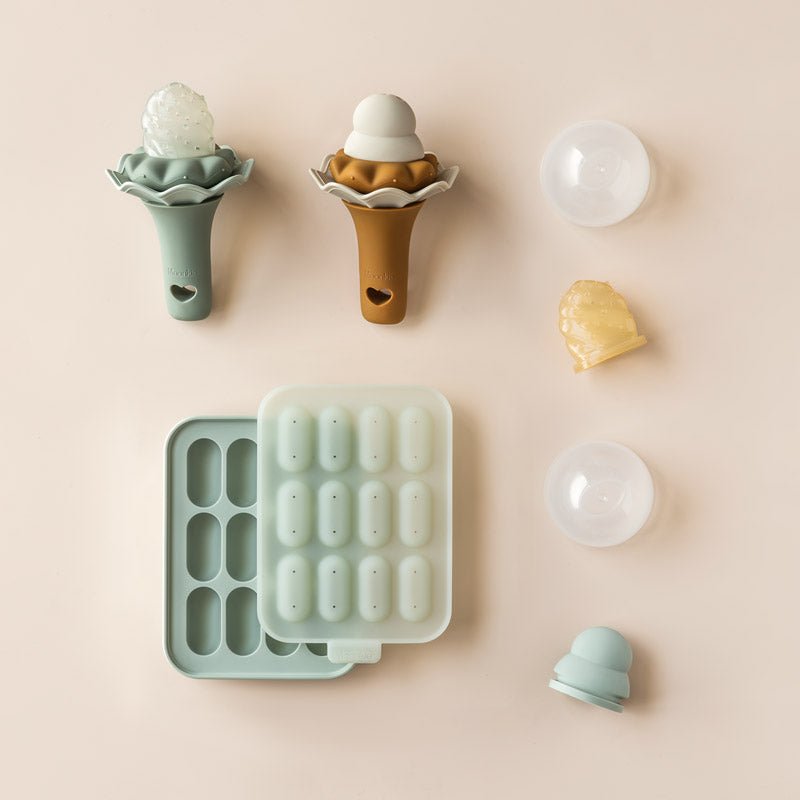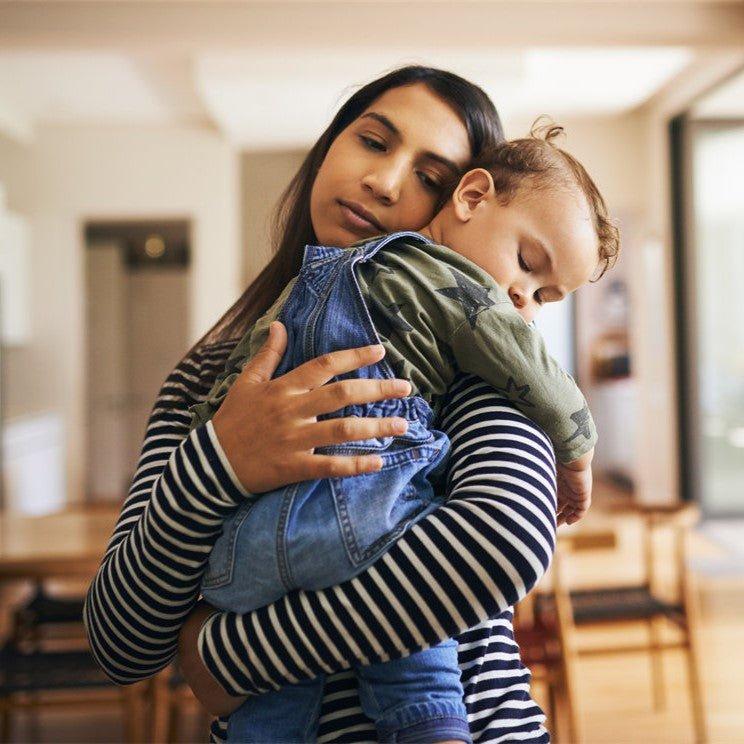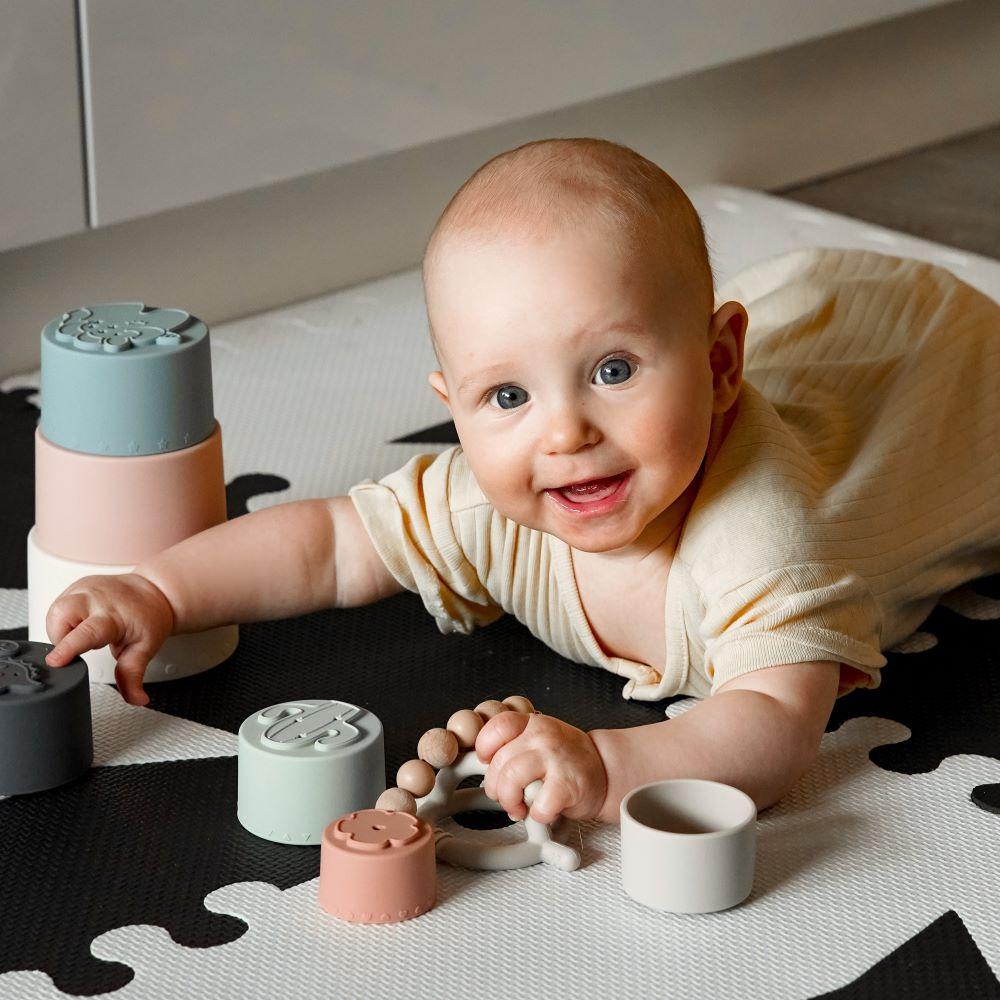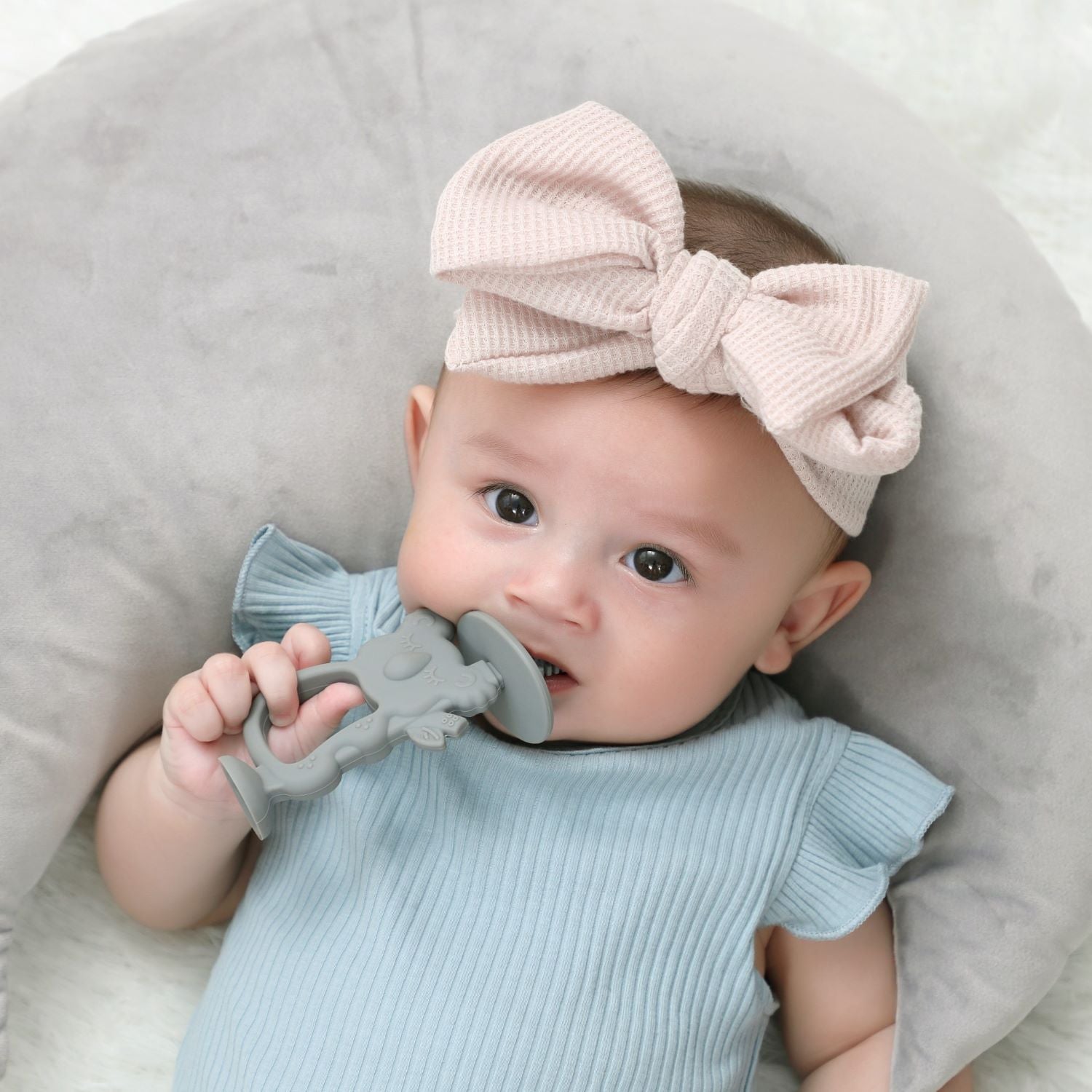Respiratory illnesses run rampant in the U.S. between October and March, but many initial symptoms look like the common cold. How do you know your little one has something worse than a cold before it actually gets out of hand?
Respiratory syncytial virus (RSV) is an incredibly contagious virus that infects the lungs and airways. Left unchecked, it is particularly dangerous for babies and toddlers, as it is the leading cause of bronchiolitis and pneumonia in young children.
Unfortunately, RSV and other viruses cannot be treated with antibiotics (because bacteria don't cause them), so you simply have to manage symptoms according to your pediatrician's instructions. If symptoms worsen or morph into a respiratory infection, take your baby to the emergency room.
How Do I Know It's RSV?
RSV starts like any other cold: runny nose, congestion, coughing, sneezing, and often a fever. Infants may only show symptoms of irritability, breathing difficulties, difficulty eating, and less movement and energy, similar to other viruses (source).
Individuals infected with RSV will likely not show symptoms for 4 to 6 days, and when those symptoms start, they look like a cold! Little ones typically show symptoms on Day 2 or 3, but the worst of RSV doesn't happen until Days 4 or 5.
So, how can you know whether symptoms are RSV or some other cold virus? You have to take a test.
The FDA approved the very first at-home test for detecting the flu, RSV, and COVID-19 in May 2022 (source). It's a $129 swab test that you send to a lab. The lab takes 1-2 days to process the results, and you don't have to pay for a doctor's visit to get the test.
Knowing what you are infected with can help determine whether you should distance yourself from family members at home or stay home a couple more days after your fever breaks to avoid sharing. Sharing is not always caring!
However, this test is not rated for children younger than 2, so if you see worsening symptoms, take your little one to the pediatrician for a test (source). Otherwise, if someone in your household pops positive for RSV, you can reasonably assume that everyone else with symptoms has it, too.
Is it not RSV? Learn about other common illnesses your baby can catch and how to handle them in 15 Questions First-Time Parents Ask About Common Illnesses and Their Babies.
Common RSV Complications in Babies and Toddlers
Parents can get ahead of RSV complications by seeing their pediatrician for a test at the first signs of symptoms, especially after exposure to someone positive for RSV. Remember, a teenager or adult can be infected for 4 to 6 days before showing symptoms.
Since there is no medicine or antibiotic you can take to get rid of a virus, you must simply manage symptoms until they pass, even for babies and toddlers.
Alas, babies and toddlers younger than 3 years can go downhill quickly with RSV due to the inability to consistently cough up mucus and blow their nose. Respiratory infections like pneumonia and bronchiolitis are common complications that could lead to hospitalization.
When Should I Take My Baby to the Doctor?
Whether you know your baby has RSV or not, you should take your baby to the doctor if your baby has a hot fever, a significant decrease in wet diapers (as in only 4 or 5 wet diapers in 24 hours), or a deep "rattle cough."
But you should go to the Emergency Room if any of the following happens:
vomiting (hardly keeping anything down)
significantly decreased appetite
less than 3 poopy diapers in 24 hours
less than 3 wet diapers in 24 hours (dehydration)
diarrhea (3 diapers or throughout the day or night)
fever (above 100.4°F or 38°C for 1-3 month olds)
persistent or spreading skin rash
wheezing
labored breathing (sucking in the top of the belly or the trachea)
rapid breathing (even when sleeping)
apnea (pauses in breathing for more than a few seconds)
pale or bluish lips, skin, or nails
severe coughing spats
Hot fevers can damage the brain, while vomiting or diarrhea combined with a decreased appetite can dehydrate your baby quickly.
Difficulty breathing, with deep coughs and wheezing, indicates restricted airways (caused by mucus or inflammation), which could lead to choking or weakness.
Don't delay a trip to the Emergency Room if you see symptoms like these--babies struggling with such symptoms need medical help right away.
When Should I Take My Toddler to the Doctor?
Though toddlers over a year old can handle a slightly warmer fever and are less likely to choke on their own mucus, they are still vulnerable to RSV complications.
Take your toddler to the pediatrician if you suspect RSV, hear a rattly cough, or see a significantly decreased interest in eating, drinking, or playing.
Go to the Emergency Room if your toddler has any of the following:
vomiting for more than a day
significantly decreased appetite
less than 3 pees in 24 hours (dehydration)
diarrhea (3 times or throughout the day or night)
fever (above 102°F or 39°C)
persistent or spreading skin rash
wheezing
labored breathing (sucking in the top of the belly or the trachea)
rapid breathing (even when resting)
severe coughing spats
These are common signs that your child's respiratory virus has triggered a respiratory infection affecting normal body functions. Dehydration, gunk in the lungs, and inflamed airways are all reasons a toddler may be hospitalized.
Babies and Toddlers Staying in the Hospital with RSV
Babies infected with RSV and rapidly worsening symptoms will likely be hospitalized for 5 to 7 days or until they are through the worst of it. Bronchiolitis and pneumonia are the most common RSV complications in babies under a year old (source).
Let's take a closer look at both of these complications and how they are handled at the hospital.
Bronchiolitis
Bronchiolitis is an unfortunately common lower respiratory tract infection that restricts the airways, causing difficulty breathing (source). You can see a baby or toddler is struggling with bronchiolitis when he sucks his sides and trachea inward to breathe while sitting still. Every breath looks like hard work.
Bronchiolitis is particularly dangerous in babies already dealing with excess mucus because the mucus can stop up the restricted airways (the younger the baby, the more perilous it is).
A dangerous cycle happens: the baby struggles with mucus blocking his restricted airways, spends lots of energy coughing and breathing, cannot eat or rest well with all these other symptoms, becomes dehydrated, and loses the energy to cough up mucus or try eating.
The cure? Days of suctioning airways with nasal saline and a hospital's wall suction machine, providing oxygen and breastmilk or formula or food through intubation if necessary. In dehydration cases, an IV may be required (source).
Pneumonia
Pneumonia is a deceptively dangerous infection that inflames the air sacs (alveoli) in the lungs and fills them with fluid or pus (source). Pneumonia can be bacterial or viral, but the pneumonia that comes as a complication of RSV tends to be bacterial (source).
Signs of pneumonia are (source):
a cough that brings up greenish, yellow, or bloody mucus
fever with chills
rapid and shallow breathing
fatigue
loss of appetite
nausea and vomiting
chest pain
If your baby or toddler has symptoms like these, take her to your doctor. Do not wait for symptoms to get even worse.
Respiratory infections must be dealt with sooner rather than later because they progress quickly. Viral respiratory infections are the terrifying leading cause of hospitalization for babies and toddlers globally and the second major cause of infant death (source).
Treatment for RSV pneumonia at the hospital involves the same routine: managing mucus with wall suction and nasal saline, administering fluids through IV to avoid dehydration, giving nutrition by intubation if necessary, and providing oxygen to keep your little one's blood oxygen saturation above 90%.
The primary difference in care between RSV pneumonia and RSV bronchiolitis will be an antibiotic should your little one have bacterial pneumonia (source).
What to Expect in the Hospital with RSV
Everything above helps you understand the practical care your little one will receive in the hospital, but it doesn't prepare you for the emotional side. As vital as suctioning is to your little one's recovery, it is difficult to watch, especially for babies.
The wall suction machine works wonders for pulling that troublesome mucus out of your little one's nose and mouth, but it works best when the mucus is loosened with a nasal saline solution.
Typically, a baby struggling with mucus is laid on its back on the hospital bed, and a parent or nurse holds the baby's hands and head still. Another nurse then squirts a saline solution into one nostril and suctions everything out of the other nostril and the mouth until the baby's cries sound clear of gurgles.
The process looks like your baby is choking on liquid, and it understandably drives up your baby's heart rate, making him breathe hard. However, your little one will breathe much more clearly after this!
Suctioning is done as often as needed throughout the hospital stay, especially before eating or napping.
Deep Suctioning
If your baby's nasal passages become fairly clear, but your baby is still obviously struggling to breathe and swallow due to mucus in the throat (beyond normal suctioning's reach), the respiratory therapist may suggest "deep suctioning."
Deep suctioning involves attaching a small catheter to the wall suction machine and pushing it through the nose to the back of the throat.
It should probably not be done more than once or twice during your hospital stay because deep suctioning can irritate your baby's throat and cause more mucus and swelling.
How to Manage RSV at Home
If you suspect RSV, you should take your baby or toddler to the doctor so you can confirm with a test. Your pediatrician will check for symptoms indicating bronchiolitis or pneumonia and, provided that your child is clear of those, explain RSV's timeline.
The pediatrician will also explain how to manage symptoms, when to go to the ER, and dosage recommendations for fever reducers.
Hydration
The #1 way to manage RSV at home (and stay out of the hospital) is to keep your little one hydrated. Hydration will keep your child's mucus thinner and easier to cough up, which is a step toward avoiding pneumonia or ear infections.

Keeping your little one hydrated depends on his ability and willingness to drink fluids. Unfortunately, excess mucus makes drinking and eating uncomfortable for toddlers and nearly impossible for babies.
Mucus
Suctioning mucus from the nose and mouth is crucial. You can use a nose bulb or NoseFrida for suctioning and nasal saline spray to loosen mucus.
However, avoid irritating your little one's nose with these tools. Irritation inside the nose will only cause more swelling and mucus.
Fever
Another thing you must manage to stay out of the hospital is fever. Babies younger than 3 months struggle to regulate their own body temperature and cannot have over-the-counter medicine, so talk to your pediatrician about keeping your newborn's fever down.
Go to the Emergency Room if your little one's fever reaches:
Age |
Temperature |
0 to 3 months |
100.4°F or 38°C |
3 to 6 months |
102°F or 38.89°C |
6 months+ |
103°F or 39.4°C |
Oxygen
If your little one struggles to breathe while resting, sucks in her trachea and sides to breathe while sitting still, seems too fatigued to play or eat, or stops breathing for a few seconds, she may not be getting enough oxygen on her own and should go to the Emergency Room right away.
You can invest in a pulse oximeter to keep an eye on your child's heart rate and blood oxygen saturation level at home. Saturation below 90% is not adequate and requires oxygen support at the hospital.
Ideally, you can keep your little one healthy before ending up sick or in the hospital. Learn how by reading Keeping Your Baby Healthy: Tips for Protecting Your Baby's Health.
Vaccination
Since 2023, RSV vaccines have been available to lessen the severity of the illness if one were to catch it. A mother can receive the vaccine during pregnancy to pass on its benefits to her baby, or a baby can receive it as young as a week old (source).

Folks have mixed feelings about vaccinations, particularly in giving so many to babies. Learn which vaccines are required in the U.S. and which are optional in A Quick Guide to Baby Vaccinations in the U.S.
In a Nutshell
Hopefully, your little one avoids catching RSV altogether. But, should she catch it, know that you have the tools and resources to get your little one through it. Knowing how to manage your child's symptoms and when you should go to the hospital is crucial to safeguarding your sweet child. Don't take chances with RSV!


